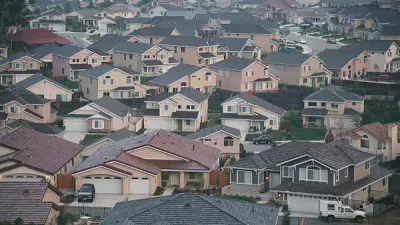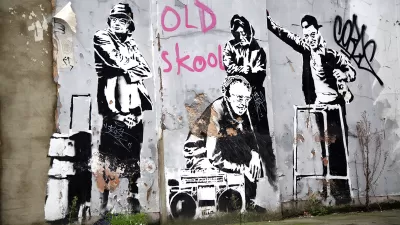The suburbs are not conducive to the aging baby boomers that populate them. How do we prepare?

Lloyd Alter predicts a coming calamity in the suburbs, as aging boomers become less mobile in an unaccommodating environment. "The fact is, there is a major urban planning disaster staring us all in the face, which is going to seriously hit everyone young and old in about 10 years when the oldest boomers are 78."
There are currently an estimated 76 million people born 1946-1964 in the United States. Persons 68 and over own more than half of the owner-occupied homes, and "an estimated 70 percent of Baby Boomers live in areas served by limited or no public transit," writes Jane Gould in her book, Aging in Suburbia: The Must-Have Conversation About Homes and Driving.
Alter suggests the need for New Urbanist developments that provide Main Street-style convenience to retail, recreation and health amenities. He also suggests that technology can play a role: self-driving cars can run errands and the Internet-enabled sharing economy can accommodate resource pooling.
"The share economy is likely to reinvent personal transportation and make it more feasible for Boomers to age in place, if that is their true wish," Gould writes.
FULL STORY: It won't be pretty when boomers lose their cars

Maui's Vacation Rental Debate Turns Ugly
Verbal attacks, misinformation campaigns and fistfights plague a high-stakes debate to convert thousands of vacation rentals into long-term housing.

Planetizen Federal Action Tracker
A weekly monitor of how Trump’s orders and actions are impacting planners and planning in America.

San Francisco Suspends Traffic Calming Amidst Record Deaths
Citing “a challenging fiscal landscape,” the city will cease the program on the heels of 42 traffic deaths, including 24 pedestrians.

Defunct Pittsburgh Power Plant to Become Residential Tower
A decommissioned steam heat plant will be redeveloped into almost 100 affordable housing units.

Trump Prompts Restructuring of Transportation Research Board in “Unprecedented Overreach”
The TRB has eliminated more than half of its committees including those focused on climate, equity, and cities.

Amtrak Rolls Out New Orleans to Alabama “Mardi Gras” Train
The new service will operate morning and evening departures between Mobile and New Orleans.
Urban Design for Planners 1: Software Tools
This six-course series explores essential urban design concepts using open source software and equips planners with the tools they need to participate fully in the urban design process.
Planning for Universal Design
Learn the tools for implementing Universal Design in planning regulations.
Heyer Gruel & Associates PA
JM Goldson LLC
Custer County Colorado
City of Camden Redevelopment Agency
City of Astoria
Transportation Research & Education Center (TREC) at Portland State University
Jefferson Parish Government
Camden Redevelopment Agency
City of Claremont





























